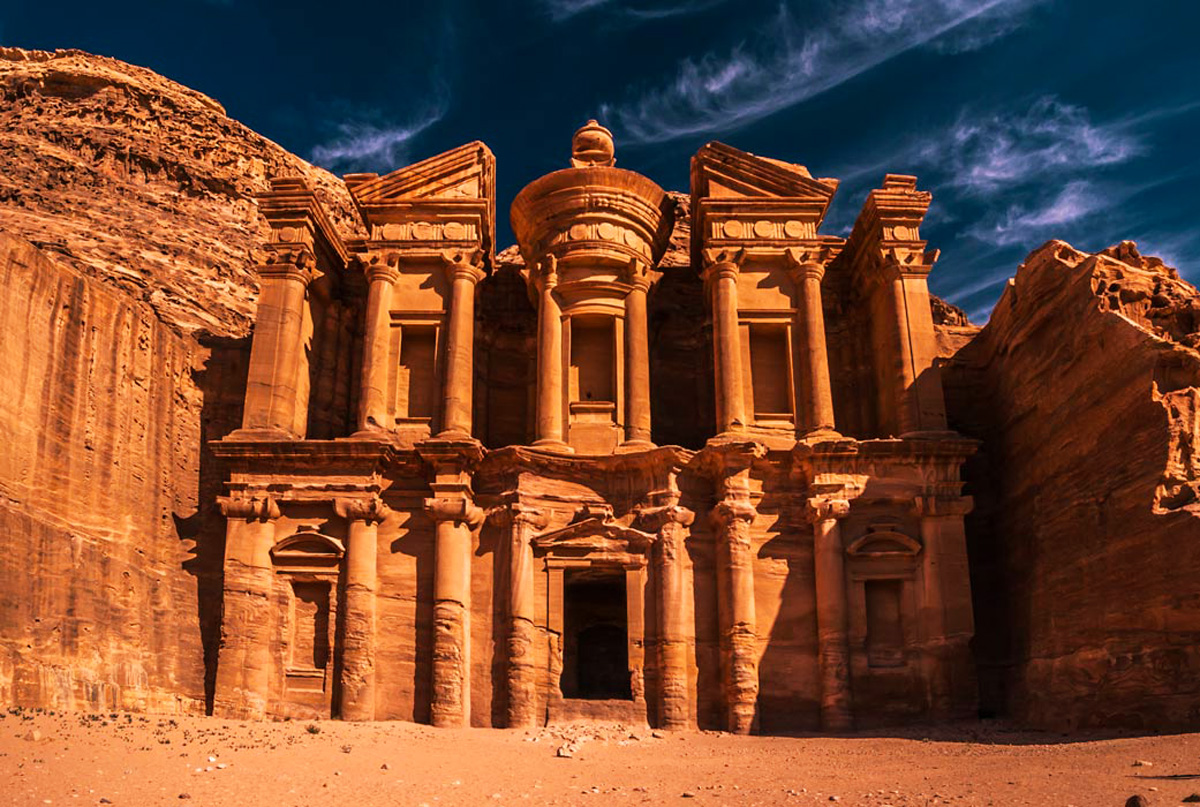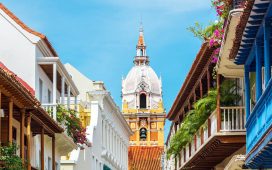Petra, the legendary “Rose-Red City” of Jordan, is one of the world’s most awe-inspiring archaeological wonders. Hidden among rugged mountains and vast desert landscapes, it’s a place where history, myth, and natural beauty converge. Walking through the narrow Siq and seeing the Treasury reveal itself at the end is a moment travelers never forget—a breathtaking encounter with both human ingenuity and the passage of time. More than just ruins, Petra feels alive, echoing the stories of the Nabataeans who carved their city into stone nearly 2,000 years ago. Every step reveals layers of history and atmosphere, making the city feel like a living museum under open skies.
History & Heritage
Petra’s past is etched into every cliff and canyon, telling the story of a once-thriving civilization. Established by the Nabataeans around the 4th century BCE, the city grew into a vital trading hub, linking Arabia, Egypt, and the Mediterranean along ancient caravan routes. Known for their mastery of water management in the desert, the Nabataeans engineered advanced cisterns and aqueducts that sustained their population and prosperity. These innovations highlight how Petra’s builders adapted ingeniously to one of the harshest environments on Earth.
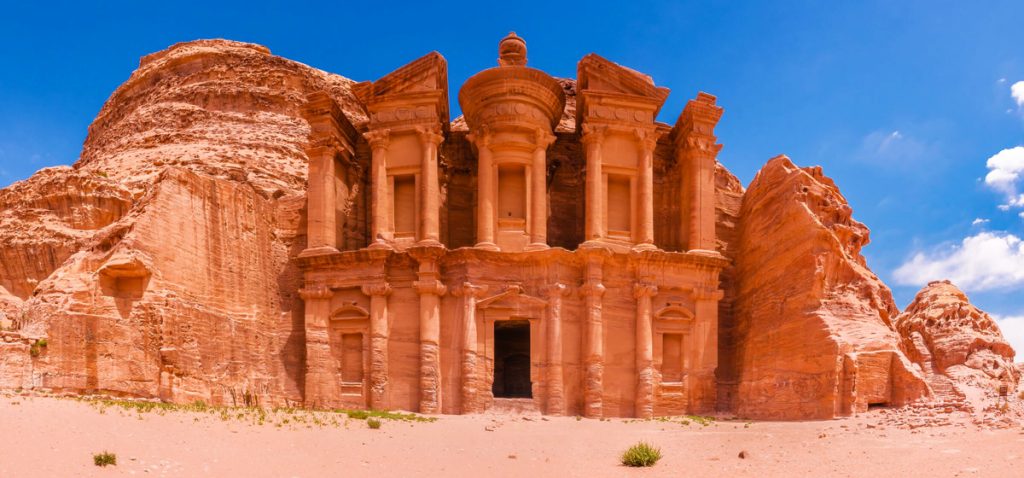
In time, Petra was absorbed into the Roman Empire, and its fortunes began to shift as trade routes changed and devastating earthquakes struck the region. The once-bustling city gradually declined and was eventually abandoned. Centuries later, in 1812, it was rediscovered by Swiss explorer Johann Ludwig Burckhardt, reigniting global fascination. Today, Petra stands as a UNESCO World Heritage Site, a symbol of endurance, and one of the world’s most iconic archaeological destinations. Its survival against time, sand, and nature makes it both fragile and eternal.
Landmarks & Architecture
Petra is filled with jaw-dropping monuments that blend natural rock formations with human artistry. Each landmark showcases not only the Nabataeans’ skills but also the grandeur of a city designed to inspire awe:
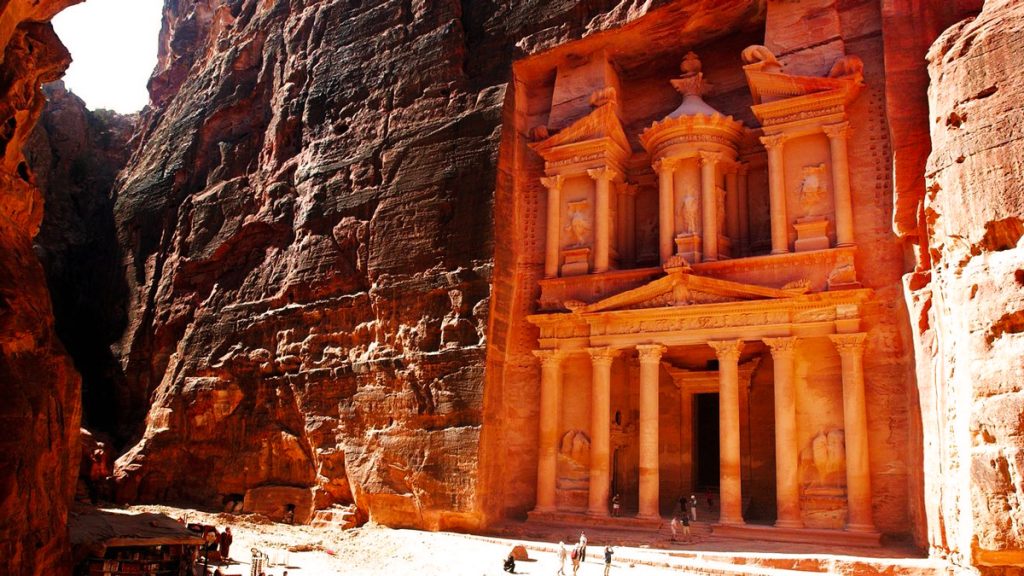
- The Treasury (Al-Khazneh): The city’s iconic façade, carved directly into rose-colored sandstone cliffs. Its symmetry, detail, and towering presence create an unforgettable first impression.
- The Monastery (Ad-Deir): Larger than the Treasury and perched high above, rewarding climbers with panoramic views. The scale of its façade makes it a stunning achievement of both design and endurance.
- The Royal Tombs: A series of ornate burial chambers cut into the mountainside. Their intricate carvings suggest the wealth and prestige of Petra’s rulers.
- The Siq: A dramatic narrow gorge that serves as Petra’s main entrance, winding nearly a kilometre through towering cliffs. The anticipation builds with every turn until the Treasury suddenly appears in sight.
- The Great Temple: A massive complex that once showcased the grandeur of Nabataean engineering. The remains reveal a blend of functional spaces and ceremonial design.

Museums & Learning
To understand Petra’s legacy, a visit to these museums adds depth to the journey. They provide the essential context that brings the ruins to life:
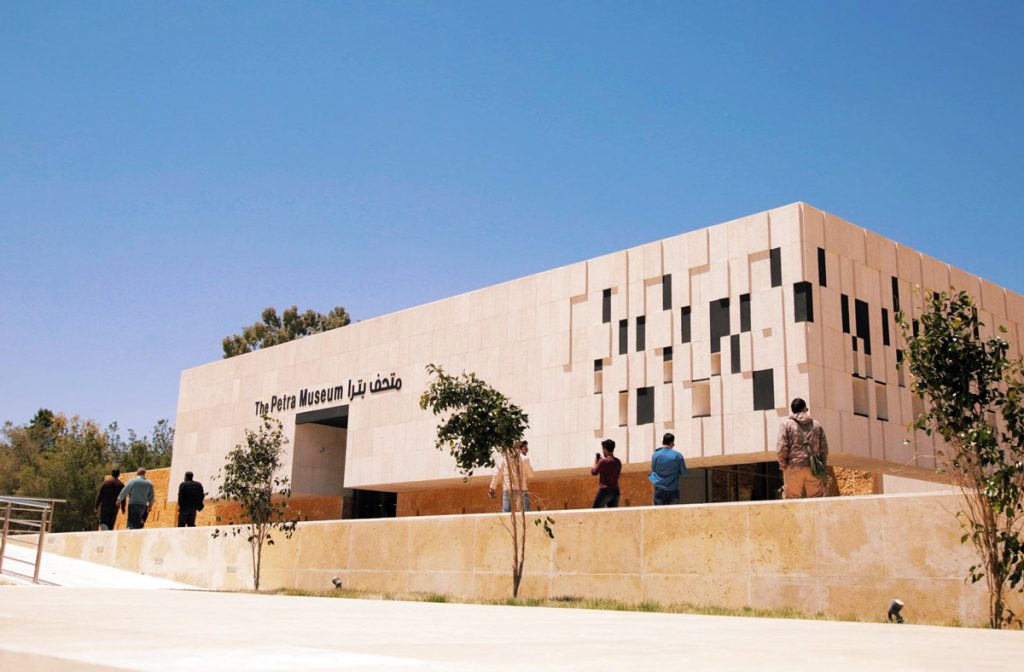
- Petra Archaeological Museum: Displays artifacts excavated from the site, including coins, pottery, and tools. These finds help reconstruct the daily rhythms of Nabataean society.
- Nabataean Hall, Jordan Museum: Offers insight into the daily lives and culture of the Nabataeans. The exhibits highlight their artistry and deep connection with the desert landscape.
- Petra Visitor Center Exhibits: An excellent starting point for orientation and guided tours. Informative displays make it easier to appreciate the scale and complexity of what lies ahead.
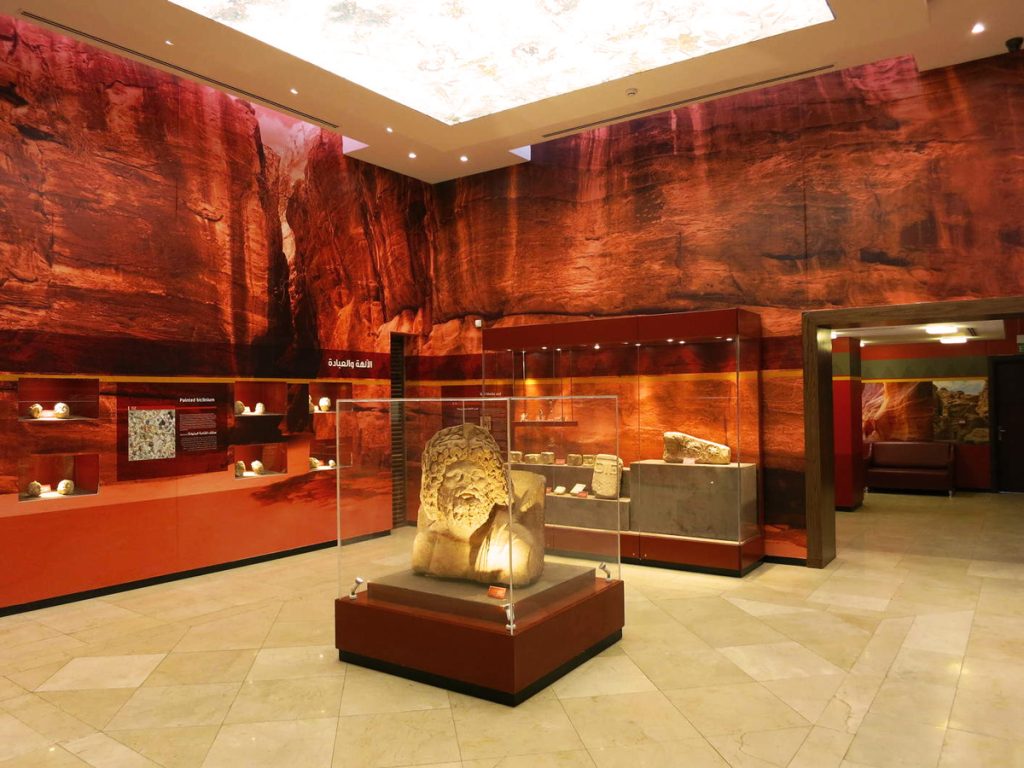
Culture & Local Life
Petra is more than its ruins—it’s also a window into Jordanian hospitality and heritage. Experiencing the living culture around Petra gives balance to its ancient majesty:
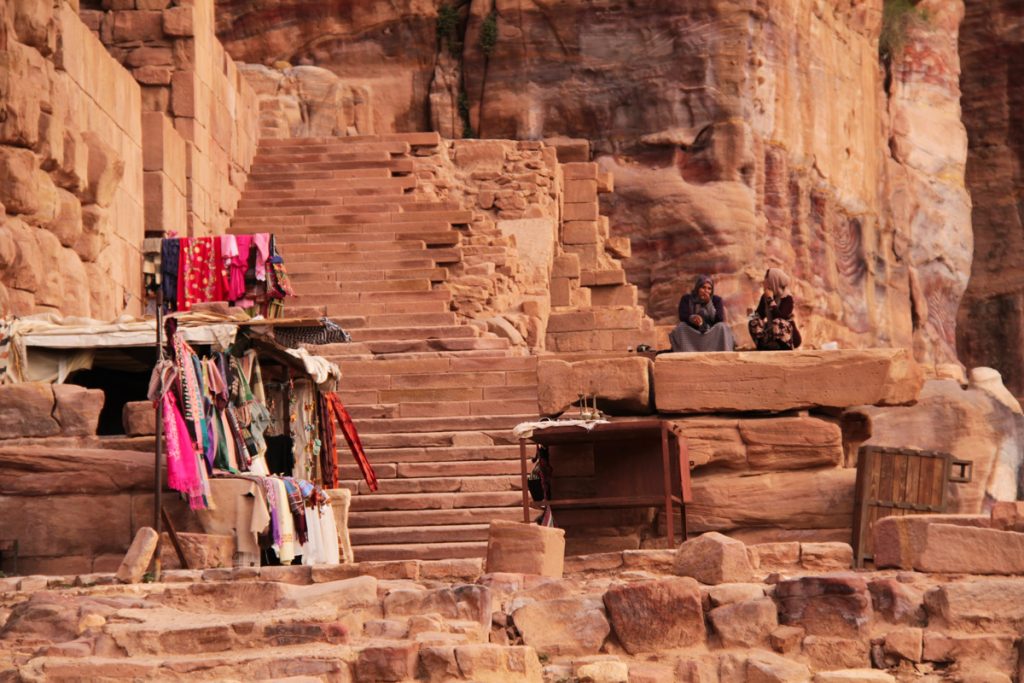
- Interactions with the Bedouin community, who have lived in and around Petra for generations, offer cultural richness. Their knowledge of the land is a bridge between past and present.
- Traditional crafts, like silver jewelry and woven textiles, make for meaningful souvenirs. Each piece carries a story of skill, heritage, and connection to the desert.
- Music, storytelling, and folklore continue to keep the spirit of the desert alive. Performances often blend modern life with echoes of ancient traditions.
Hidden Gems
Beyond the main monuments, Petra has corners that reward the curious traveler. These quieter experiences reveal a more intimate side of the city:
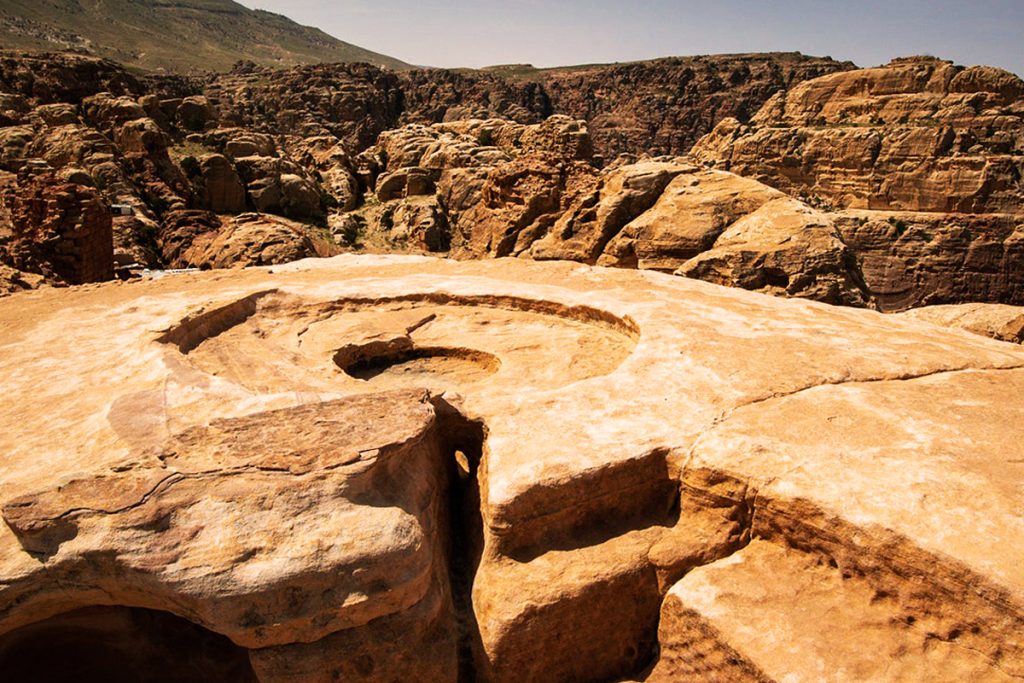
- High Place of Sacrifice: A mountaintop altar with sweeping views of the city. The climb itself is a journey through history and nature combined.
- Petra by Night: An unforgettable candlelit walk through the Siq to the Treasury under a blanket of stars. The atmosphere is magical, with music and storytelling heightening the experience.
- Little Petra (Siq al-Barid): A smaller but equally captivating archaeological site just outside the main complex. It gives insight into daily Nabataean life and trade.
- Al-Khubtha Trail: A more secluded hike leading to a viewpoint over the Treasury. The panorama rewards travelers with a fresh perspective on Petra’s grandeur.

Nature & Outdoors
Petra is as much about landscapes as it is monuments, offering moments of raw natural beauty. The interplay of geology and human history is breathtaking:

- Rugged sandstone cliffs painted in red, pink, and ochre hues. They seem to glow at different times of the day, shifting with the light.
- Hiking trails that weave through valleys and mountains, offering solitude and vistas. Each path provides its own unique angle on the sprawling city.
- Flora like desert acacias and rare plants that thrive in rocky terrain. Their resilience adds to the sense of life enduring in unlikely places.
- Wildlife including lizards, birds, and mountain goats that roam the surrounding wilderness. Spotting them adds to the feeling that Petra is still alive.
Food & Dining
Petra’s nearby town of Wadi Musa provides hearty Jordanian flavors and international options. Meals here reflect both tradition and warmth:
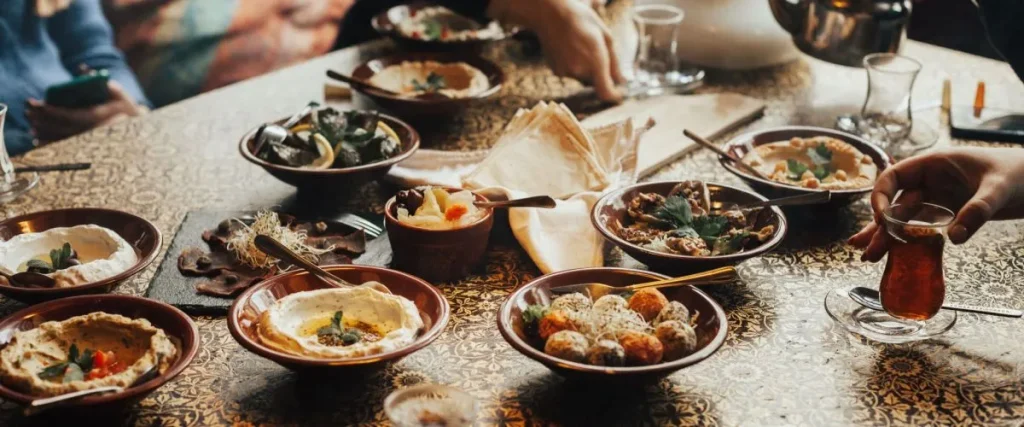
- Al-Wadi Restaurant: Known for traditional mezze, lamb dishes, and warm hospitality. It’s a perfect introduction to authentic Jordanian dining.
- Petra Kitchen: A hands-on dining experience where travelers cook alongside local chefs. It’s both a meal and a cultural exchange, full of flavor and learning.
- Al Qantarah Restaurant: Mid-range option with a good mix of regional dishes and vegetarian choices. Its setting creates a relaxed and welcoming environment.
- My Mom’s Recipe: Offers authentic Jordanian home-style cooking in a cozy setting. The friendly atmosphere makes it feel like dining with family.
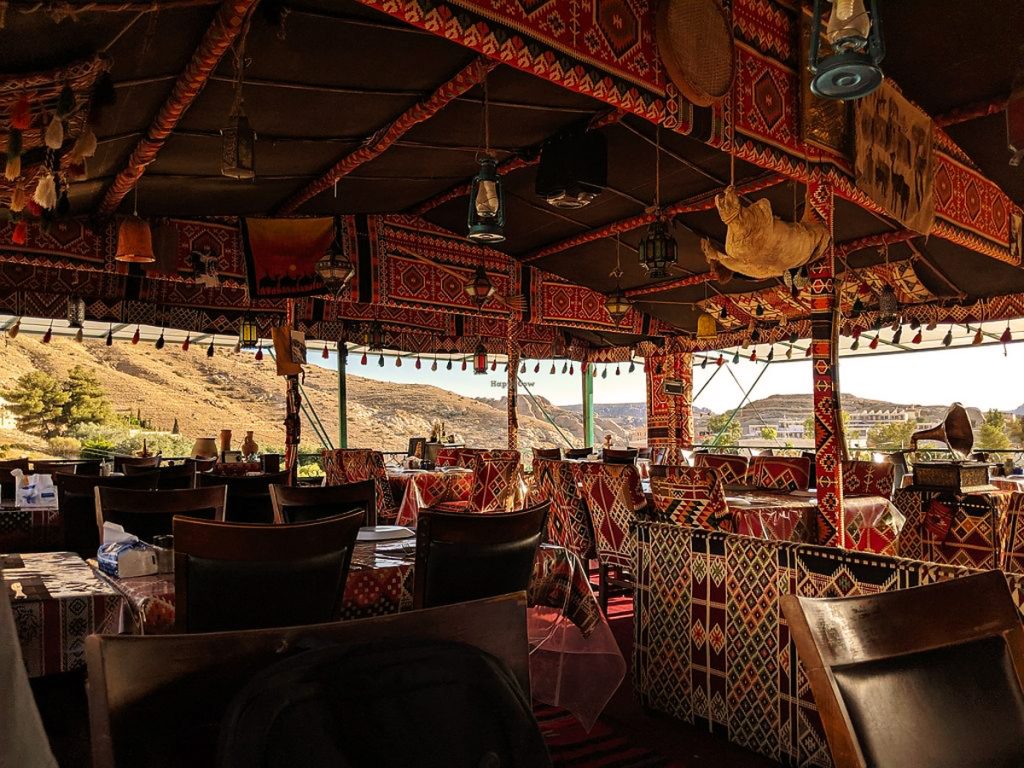
Where to Stay
Accommodations range from luxurious comfort to authentic stays. Every traveler finds an option that suits their journey:
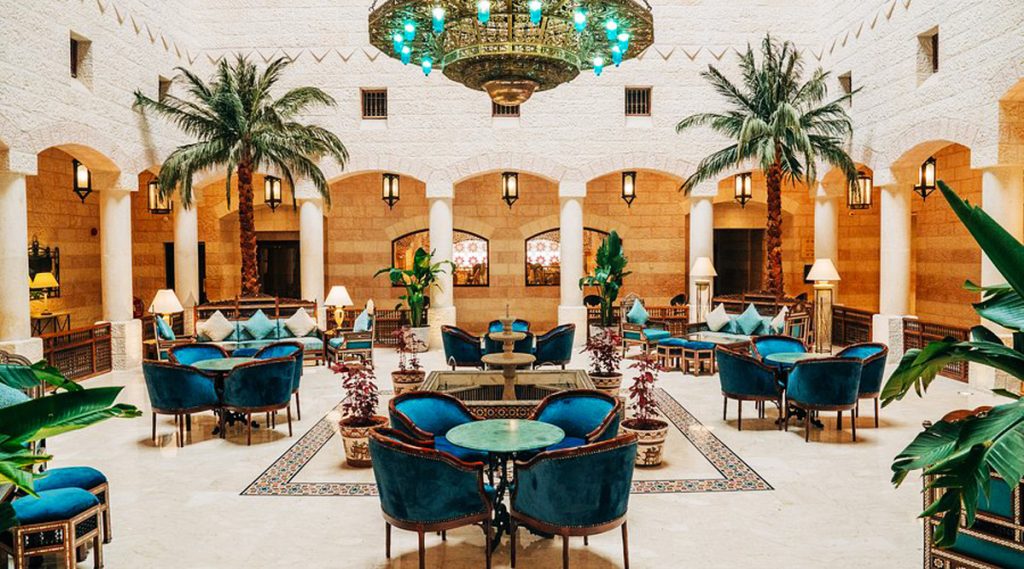
- Luxury – Mövenpick Resort Petra: Just steps from the entrance, with elegant rooms and sweeping views. Its amenities provide the perfect retreat after long days of exploring.
- Mid-Range – Petra Moon Hotel: Comfortable with excellent rooftop views. The hospitality ensures a smooth and pleasant stay.
- Budget – Valentine Inn: Affordable and friendly, popular among backpackers. Its social atmosphere makes it easy to meet other travelers.
- Unique – Seven Wonders Bedouin Camp: For an unforgettable desert night under the stars. The experience combines adventure with cultural immersion.
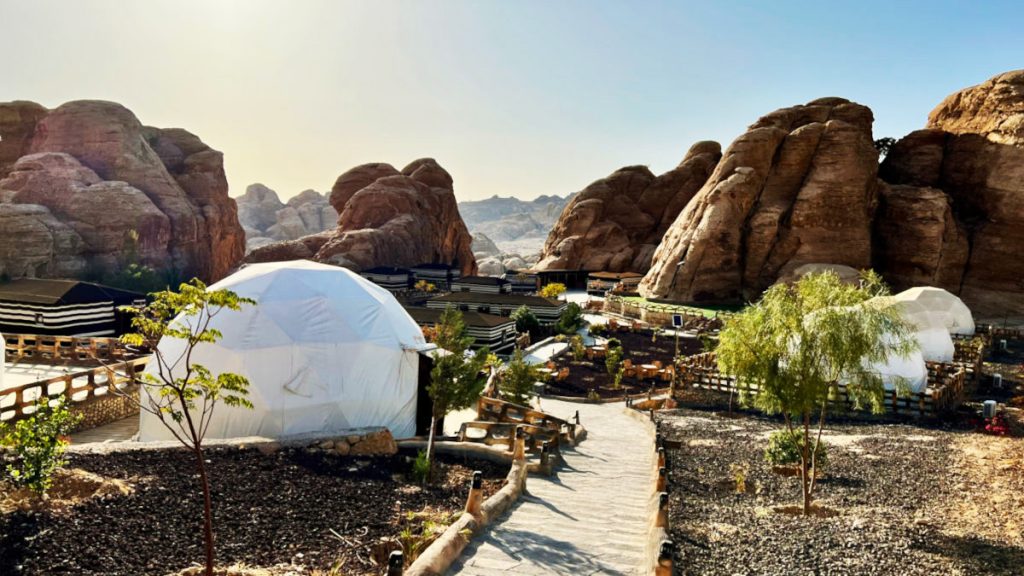
Day Trips
Petra is perfectly positioned for exploring Jordan’s other treasures. Each journey offers a different side of the country:
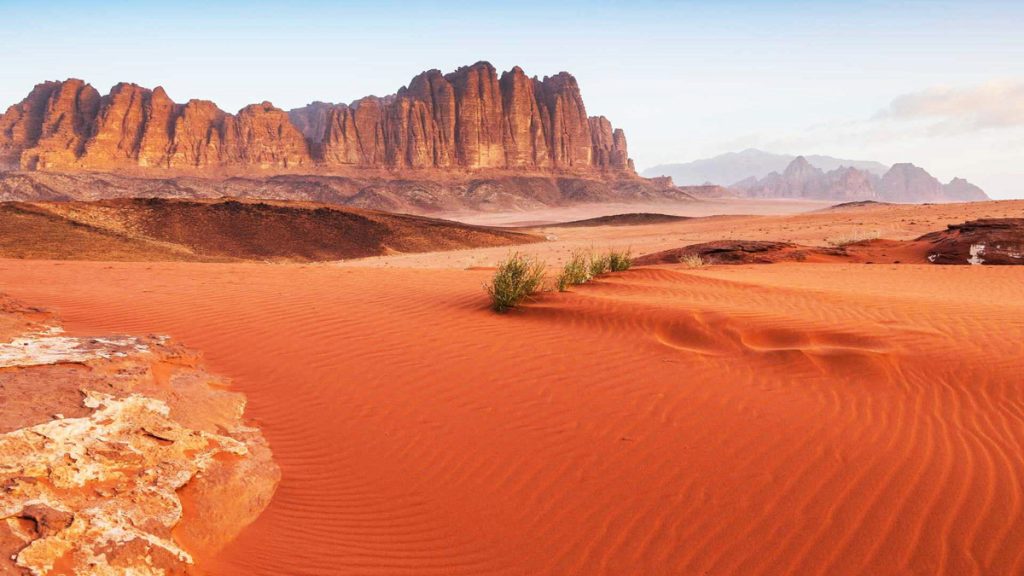
- Wadi Rum: A surreal desert of red sand and towering rock formations, famed for stargazing. The landscape has an otherworldly beauty used in many films.
- Dead Sea: Float in the salty waters and experience its therapeutic mud. The lowest point on Earth, it’s both surreal and rejuvenating.
- Shobak Castle: A Crusader fortress perched on a remote hilltop. Its isolated setting creates an atmosphere of mystery and history combined.
- Dana Biosphere Reserve: A haven for hiking, wildlife, and eco-tourism. The reserve’s diversity makes it a paradise for nature enthusiasts.

Spotlight: The Treasury Unveiled
Standing before the Treasury is one of travel’s most magical moments. Carved in the 1st century CE as either a royal tomb or temple, its intricate Hellenistic façade—columns, pediments, and sculptures—emerges dramatically from the canyon’s shadows. Its pink sandstone glows differently throughout the day, catching golden sunrise light or deepening under twilight’s hues.
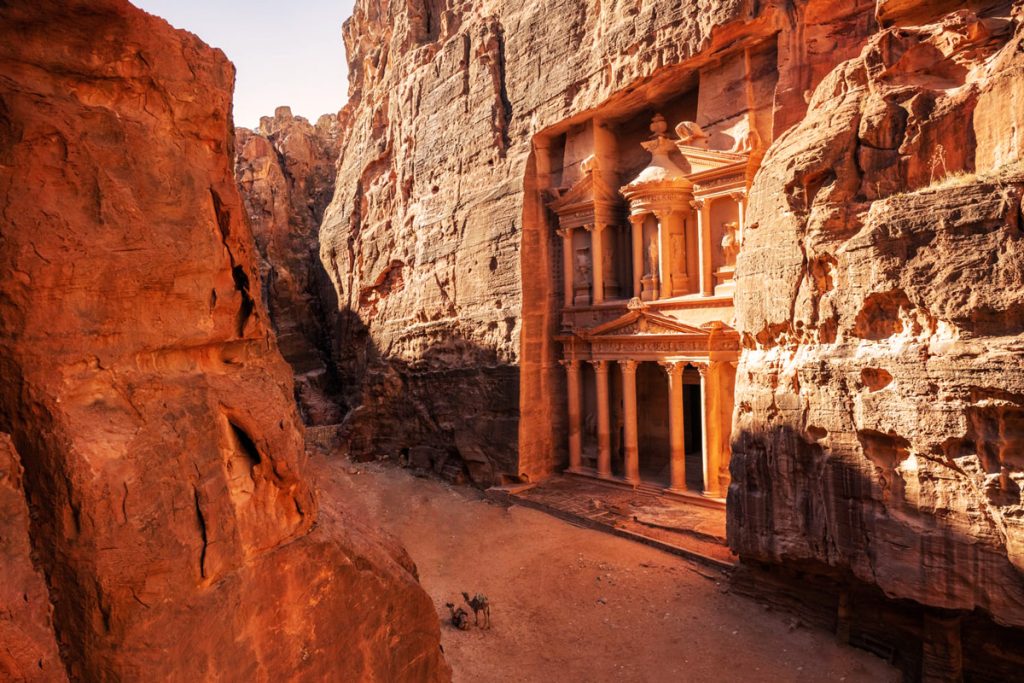
But the Treasury is more than just a postcard view. Legends surround it—locals once believed it held hidden treasures of ancient pharaohs, inspiring its name. Sitting on the ground in front of it, surrounded by silence or the murmur of visitors, you feel Petra’s timelessness. It’s a reminder of the Nabataeans’ artistry and ambition, and why Petra is truly a wonder of the world.
Practical Tips
Visiting Petra is unforgettable, but a little planning makes the journey smoother. Being prepared ensures you make the most of your time here:

- Timing Your Visit: Arrive early in the morning or late in the afternoon to avoid crowds and experience cooler temperatures. Sunrises and sunsets give the rocks their most dramatic hues.
- Tickets: A one-day pass is available, but consider a two- or three-day ticket to explore more leisurely. The Jordan Pass is also a cost-effective option if you’re touring the country. It simplifies entry and saves money.
- Footwear: Comfortable walking shoes are essential—expect long distances and uneven terrain. Trails can be steep and rocky, so sturdy footwear makes a big difference.
- What to Bring: Sunscreen, hats, plenty of water, and light snacks are musts in the desert heat. A light scarf or jacket is also useful in the evening when it cools down.
- Guides: Hiring a local guide enriches your experience with stories and context that you won’t find on signboards. Many guides are from local Bedouin families and add a personal touch.
- Accessibility: Horses, camels, and donkeys are available for hire inside, but walking allows for the most immersive experience. Plan accordingly if you have mobility concerns.
- Petra by Night: Plan ahead if you’d like to attend—it runs on specific evenings and sells out quickly. The candlelit walk and music create an atmosphere unlike anything else in Petra.
Final Thoughts
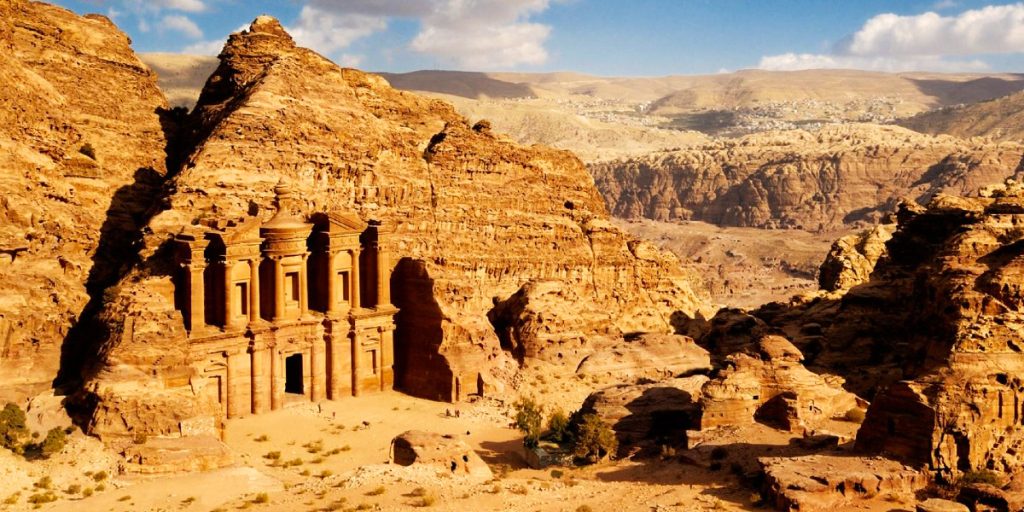
Petra is not just a destination—it’s an experience that lingers in memory long after you leave. It’s the quiet footsteps echoing in the Siq, the glow of sandstone at sunset, the welcoming smiles of locals, and the stories whispered by stones. Whether you’re a history enthusiast, adventurer, or seeker of beauty, Petra offers a journey into both the past and the soul of the desert. One visit leaves you with a lasting connection to a city that continues to inspire awe across centuries.

